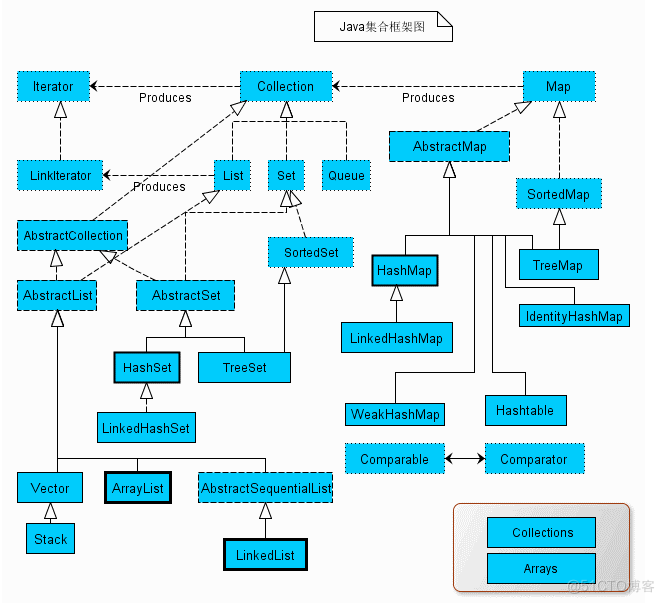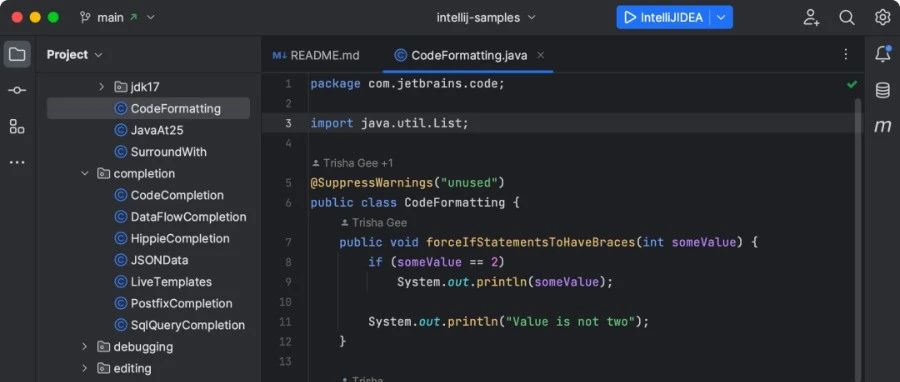面试官:怎么删除 HashMap 中的元素?我一行代码搞定,赶紧拿去用!
面试官:怎么删除 HashMap 中的元素?我一行代码搞定,赶紧拿去用!

背景
大家好,我是栈长。
前些天,栈长给大家分享了两篇有意思的文章:
带了一个 3 年的开发,不会循环删除 List 中的元素,我简直崩溃!!
面试官:怎么去除 List 中的重复元素?我一行代码搞定,赶紧拿去用!
这两篇文章确实能帮助一大部分人,其中分享的一些实现技巧,编程很多年的高手也不一定用过,不管自己水平多牛,还是多谦虚好学一些,掌握多一点总不是什么坏事。
有粉丝建议栈长出一篇删除 HashMap 里面的数据,也有粉丝建议出一个系列的文章:


那这篇就分享下如何删除 HashMap 中的元素吧!
PS: 这仅是我个人掌握的实现方案,不一定全,也不一定是最优的,欢迎大家分享,杠精勿扰。
HashMap 删除元素方案
假设有以下数据:
public Map<String, String> initMap = new HashMap<>() {{
put("user1", "张三");
put("user2", "李四");
put("user3", "张三");
put("user4", "李四");
put("user5", "王五");
put("user6", "赵六");
put("user7", "李四");
put("user8", "王五");
}};
本文所有完整示例源代码已经上传:
https://github.com/javastacks/javastack
欢迎 Star 学习,后面 Java 示例都会在这上面提供!
一般删除 HashMap 集合中的元素,如果知道具体的 Key,并且需要根据 Key 删除元素,使用 remove 方法就可以了。但是如何根据 Value 删除 HashMap 集合中的元素呢?这才是你必须掌握的技巧!
1、使用 for 循环删除
/**
* 使用 for 循环删除
* @author: 栈长
* @from: 公众号Java技术栈
*/
@Test
public void remove1() {
Set<Map.Entry<String, String>> entries = new CopyOnWriteArraySet<>(initMap.entrySet());
for (Map.Entry<String, String> entry : entries) {
if ("张三".equals(entry.getValue())) {
initMap.remove(entry.getKey());
}
}
System.out.println(initMap);
}
输出结果:
{user2=李四, user7=李四, user8=王五, user5=王五, user6=赵六, user4=李四}
使用 HashMap 中实现的 entrySet 方法获取元素的集合,然后再进行循环遍历,先根据 Value 值判断要删除的元素,然后再根据 Key 删除元素。
在之前的文章中知道,增强的 for 循环底层使用的迭代器 Iterator,而 HashMap 是 fail-fast 类型的错误机制,所以遍历时删除元素会出现 java.util.ConcurrentModificationException 并发修改异常。
所以,这里使用了线程安全的 CopyOnWriteArraySet 封装了一层,避免出现并发修改异常,java.util.concurrent 包中的并发集合类都被设计为 fail-safe(安全失败)类型的,比如 CopyOnWrite* 、ConcerrentHashMap 集合,遍历过程中结构发生变更是安全的,不会抛出以上异常。
需要注意的是: 虽然 CopyOnWriteArraySet 并发性能很好,但每次删除时都会复制一份同等集合,所以要考虑数据过多可能导致的内存消耗问题。具体使用和实现原理可以点击该 CopyOnWriteArraySet 关键字链接看之前的文章,这里不再撰述。
2、使用 forEach 循环删除
/**
* 使用 forEach 循环删除
* @author: 栈长
* @from: 公众号Java技术栈
*/
@Test
public void remove2() {
ConcurrentHashMap<String, String> map = new ConcurrentHashMap<>(initMap);
map.forEach((k, v) -> {
if ("张三".equals(v)) {
map.remove(k);
}
});
System.out.println(map);
}
输出结果:
{user2=李四, user7=李四, user8=王五, user5=王五, user6=赵六, user4=李四}
使用 HashMap 自带的 forEach 循环删除指定值的元素,这里为什么使用线程安全的 ConcurrentHashMap 集合包装了一层,同样是为了避免并发修改异常。ConcurrentHashMap 在各版本中都使用了最优的锁设计方案,它的并发性能也是非常优异的。
另外,HashMap 和 ConcurrentHashMap 也是面试必问的,如果你近期准备面试跳槽,建议在Java面试库小程序在线刷题,涵盖 2000+ 道 Java 面试题,几乎覆盖了所有主流技术面试题。
3、使用 Iterator 迭代器删除
/**
* 使用 Iterator 迭代器删除
* @author: 栈长
* @from: 公众号Java技术栈
*/
@Test
public void remove3() {
Iterator<Map.Entry<String, String>> iterator = initMap.entrySet().iterator();
while (iterator.hasNext()) {
Map.Entry<String, String> entry = iterator.next();
if ("张三".equals(entry.getValue())) {
iterator.remove();
}
}
System.out.println(initMap);
}
输出结果:
{user2=李四, user7=李四, user8=王五, user5=王五, user6=赵六, user4=李四}
这种方式即正常使用迭代器遍历删除,它不会发生并发修改异常。
需要注意的是: 这种方法虽然不会发生并发修改异常,但 HashMap 并不是线程安全的,在迭代删除元素时,另一个线程可能会删除 HashMap 中的数据, 这时使用迭代器删除同样会导致并发修改异常。 所以,要保证线程安全的删除,在创建迭代器之前,可以先用线程安全的 ConcurrentHashMap 集合包装一层。或者使用 synchronized 关键字锁住整个 Map。 如果没有多线程修改环境,可以不用考虑。
4、使用 removeIf 删除
/**
* 使用 removeIf 删除
* @author: 栈长
* @from: 公众号Java技术栈
*/
@Test
public void remove4() {
initMap.entrySet().removeIf(entry -> "张三".equals(entry.getValue()));
System.out.println(initMap);
}
输出结果:
{user2=李四, user7=李四, user8=王五, user5=王五, user6=赵六, user4=李四}
使用 entrySet 的 removeIf 删除,它底层使用的是迭代器:
default boolean removeIf(Predicate<? super E> filter) {
Objects.requireNonNull(filter);
boolean removed = false;
final Iterator<E> each = iterator();
while (each.hasNext()) {
if (filter.test(each.next())) {
each.remove();
removed = true;
}
}
return removed;
}
所以,它和方法 3 是一样的,只不过把条件写成了 Predicate 函数式接口而已。
需要注意的是: removeIf 虽然更方便了,但它仍然不是线程安全的,多线程场景参考方案同方法 3。
5、使用 Stream 删除
/**
* 使用 Stream 删除
* @author: 栈长
* @from: 公众号Java技术栈
*/
@Test
public void remove5() {
Map<String, String> map = initMap.entrySet().stream()
.filter(entry -> !"张三".equals(entry.getValue()))
.collect(Collectors.toMap(Map.Entry::getKey, Map.Entry::getValue));
System.out.println(map);
}
输出结果:
{user2=李四, user7=李四, user8=王五, user5=王五, user6=赵六, user4=李四}
利用 Stream 的 filter 方法进行过滤,这个方法也十分简单,一行代码搞定。Stream 基础就不介绍了,Stream 系列我之前写过一个专题了。
本文所有完整示例源代码已经上传:
https://github.com/javastacks/javastack
欢迎 Star 学习,后面 Java 示例都会在这上面提供!
总结
本文总结了 5 种删除 HashMap 元素的方法:
- 使用 for 循环删除
- 使用 forEach 循环删除
- 使用 Iterator 迭代器删除
- 使用 removeIf 删除
- 使用 Stream 删除
实际开发过程中,可能会使用不同的遍历方式,所以重点要考虑多线程场景,如果只是简单的删除元素,使用 removeIf 和 Stream 过滤是最省事的。
所以说,你身边还有谁不会删除 HashMap 中的元素?把这篇文章发给他吧,让大家少走弯路,少写垃圾代码,共同进步。
你还知道哪些删除技巧?欢迎留言分享~
最后,留个话题:
上面的种种方法虽然能删除 HashMap 中指定值的元素,但是不能删除所有的重复元素,你觉得怎么删除重复数据比较好?有哪些方案?
大家可以先讨论下方案,下期分享,等栈长写完~
版权声明: 本文系公众号 "Java技术栈" 原创,转载、引用本文内容请注明出处,抄袭、洗稿一律投诉侵权,后果自负,并保留追究其法律责任的权利。
- 背景
- HashMap 删除元素方案
- 1、使用 for 循环删除
- 2、使用 forEach 循环删除
- 3、使用 Iterator 迭代器删除
- 4、使用 removeIf 删除
- 5、使用 Stream 删除
- 总结

腾讯云开发者

扫码关注腾讯云开发者
领取腾讯云代金券
Copyright © 2013 - 2025 Tencent Cloud. All Rights Reserved. 腾讯云 版权所有
深圳市腾讯计算机系统有限公司 ICP备案/许可证号:粤B2-20090059 深公网安备号 44030502008569
腾讯云计算(北京)有限责任公司 京ICP证150476号 | 京ICP备11018762号 | 京公网安备号11010802020287
Copyright © 2013 - 2025 Tencent Cloud.
All Rights Reserved. 腾讯云 版权所有













